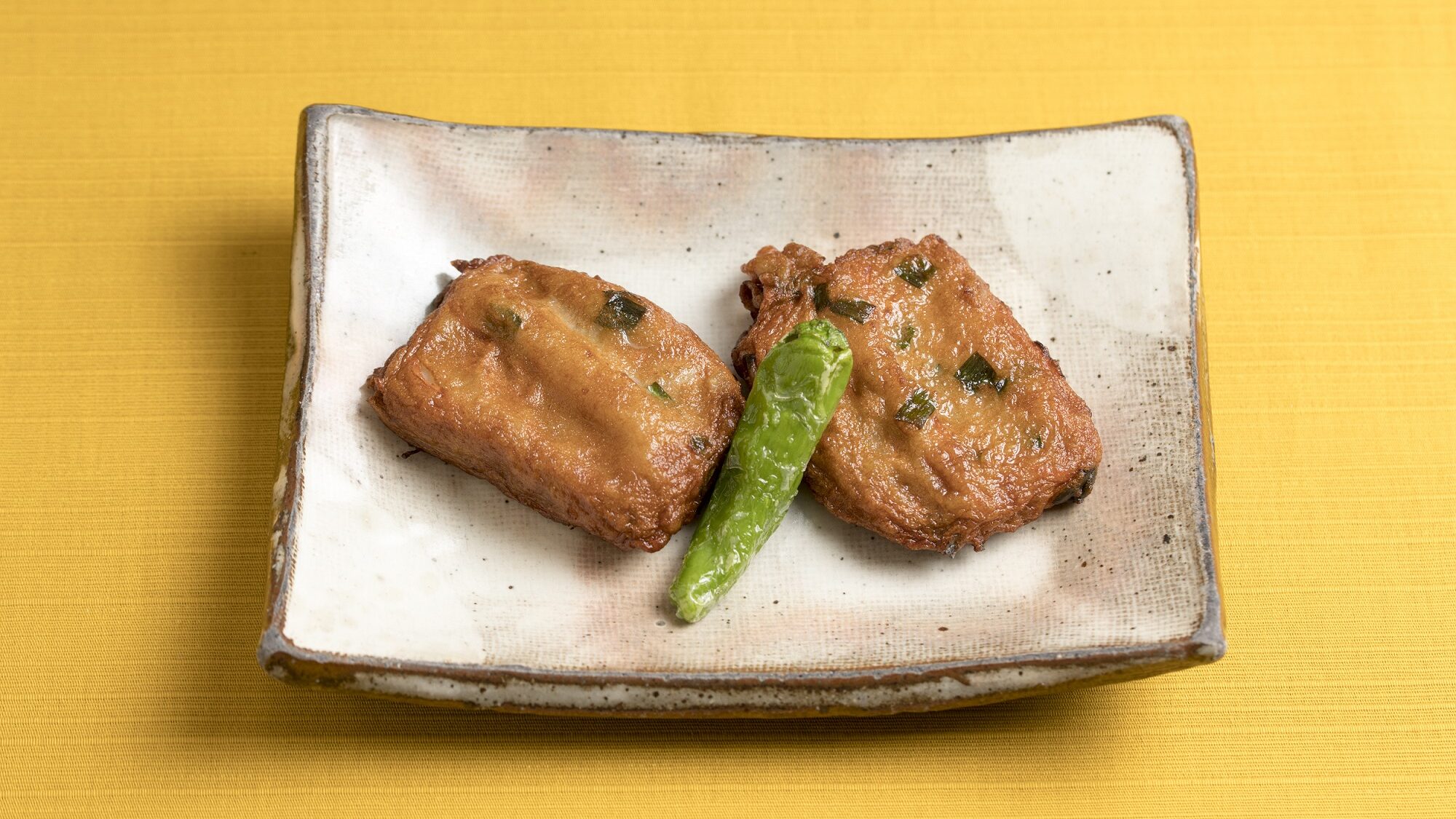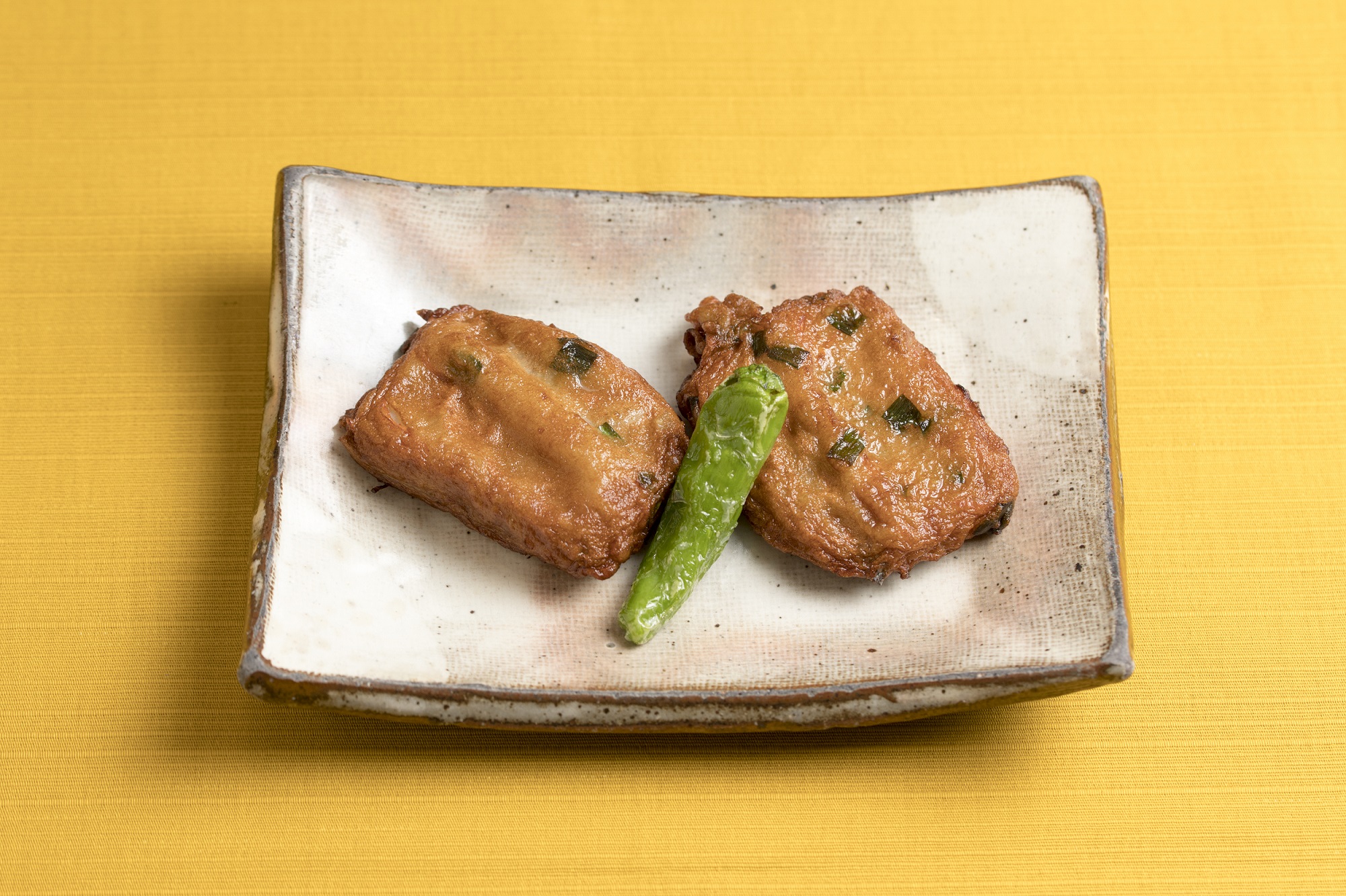
Alright, let’s head down to sunny Kagoshima and talk about “Tsukeage,” a local specialty that might remind you of fish cakes. You might know it by other names, but in Kagoshima, it’s all about “Tsukeage”! It’s a flavorful and versatile dish with a cool history.
Dish Name: Tsukeage / つけあげ
- Region / Location: Kagoshima Prefecture (throughout the prefecture).
- Primary Area of Tradition: Throughout Kagoshima Prefecture.
- Main Ingredients: 魚のすり身 (fish paste), 木綿豆腐 (Momen-dofu/firm tofu), 地酒 (local sake), 砂糖 (sugar), 薩摩芋でんぷん (Satsuma-imo denpun/sweet potato starch).
How It’s Eaten / Served
Tsukeage is enjoyed throughout the year. It’s a popular side dish, a great snack with drinks, and a versatile ingredient in dishes like stir-fries and egg drop soups.
Cultural Background and Preservation
Tsukeage is known by different names in other prefectures, such as “Satsuma-age,” “Tempura,” and “Age-kamaboko” (fried kamaboko). It has a long history, with a couple of interesting theories about its origins.
One theory is that Shimazu Nariakira, the 28th lord of the Satsuma domain, got the idea from “Kishu Hanpen” and “Kamaboko” from other domains. He adapted the recipe to create a preserved food that would suit Kagoshima’s hot and humid climate. Another theory suggests that the name “Tsukeage” comes from “Chikiagi,” an Okinawan fried kamaboko.
Tsukeage is made by mixing fish paste with tofu and “Jizake,” a local Kagoshima sake, and then deep-frying it. Common fish used include鯵 (aji/horse mackerel), 鯖 (saba/mackerel), and 飛魚 (tobiuo/flying fish). For higher-grade Tsukeage, they might use Eso (lizardfish), Hamo (pike conger), or Guchi (croaker).
A key characteristic of Kagoshima’s Tsukeage is its sweetness, achieved by adding sugar. The Jizake used in Tsukeage is also used in Kagoshima’s local “Sake-zushi.” It’s made by adding ash to the “moromi” (fermenting mash) in the sake-making process and then pressing it. This type of sake, known as “Kurozake” or “Akumochizake,” is used like mirin (sweet rice wine) in cooking and is also drunk as “otoso” (New Year’s spiced sake).
Due to Kagoshima’s warm climate, making regular “seishu” (clear sake) was difficult in the past. Instead, the production of Kurozake (Akumochizake) became popular. Because it’s not pasteurized, it retains a high amount of amino acids, which enhance the flavor of the fish in Tsukeage.
To make Tsukeage, fish meat is ground in a food processor, then mixed with drained tofu, egg, sweet potato starch, sugar, and Akumochizake. Finally, salt is added. Once everything is well combined, it’s shaped into sticks, squares, or ovals and deep-fried in oil at around 160°C (320°F) until golden brown. You can also add vegetables like carrots, burdock root, or lotus root for different textures and flavors.
Tsukeage is a popular dish in school lunches and is readily available in supermarkets, roadside stations, and specialty stores, making it a deeply ingrained part of Kagoshima’s food culture.
Additional information:
- Satsuma-age (薩摩揚げ): A type of fried fish cake.
- Hanpen (はんぺん): A soft, white fish cake.
- Kamaboko (蒲鉾): A type of cured fish surimi.
- Jizake (地酒): Local sake.
- Moromi (醪): Fermenting mash in sake production.
- Mirin (味醂): Sweet rice wine used in cooking.
- Otoso (お屠蘇): Spiced sake drunk on New Year’s Day.
- Seishu (清酒): Clear sake.
The information about regional cuisine featured on this website (Piggy's Grandma of Japan) is summarized and adapted from the Ministry of Agriculture, Forestry and Fisheries of Japan (MAFF) website, "Our Regional Cuisines"Additional commentary is provided based on the unique experiences and perspectives of the site's editors.
The copyright for the original content regarding regional cuisine belongs to the Ministry of Agriculture, Forestry and Fisheries of Japan.
The summaries and adaptations published on this site are intended for informational purposes only. Piggy's Grandma of Japan does not guarantee the accuracy or completeness of this information. For the most accurate and complete details, please refer to the original pages on the MAFF website.



